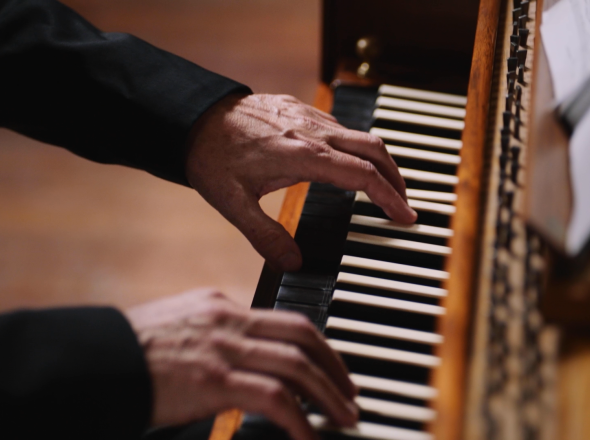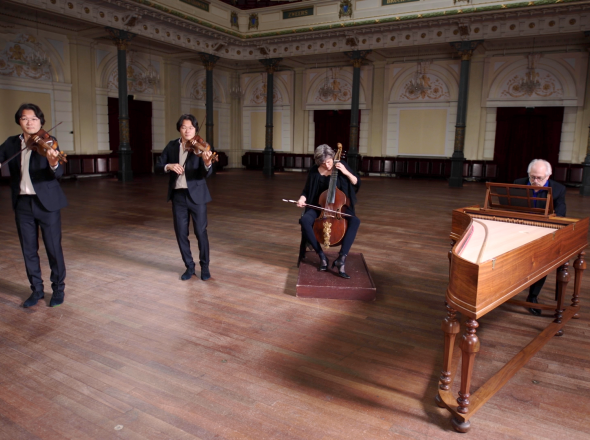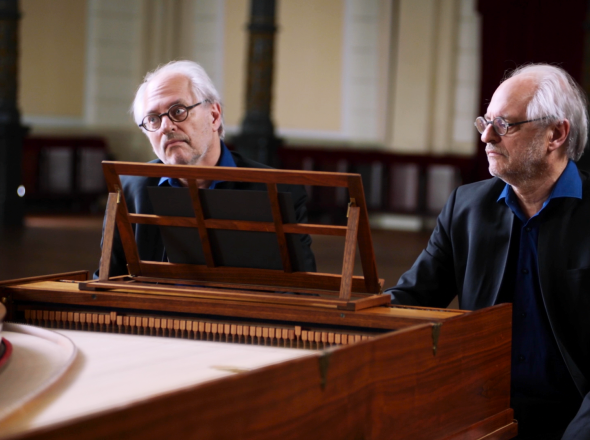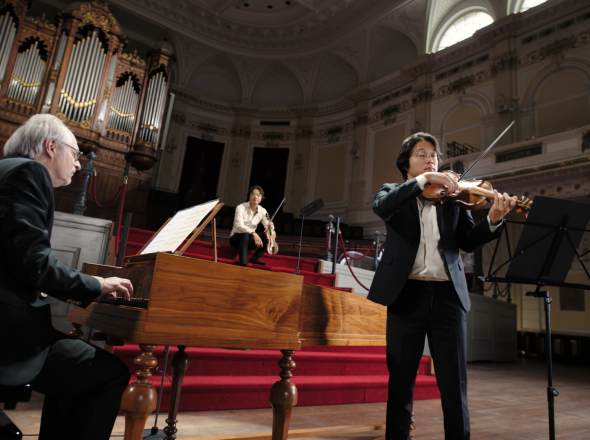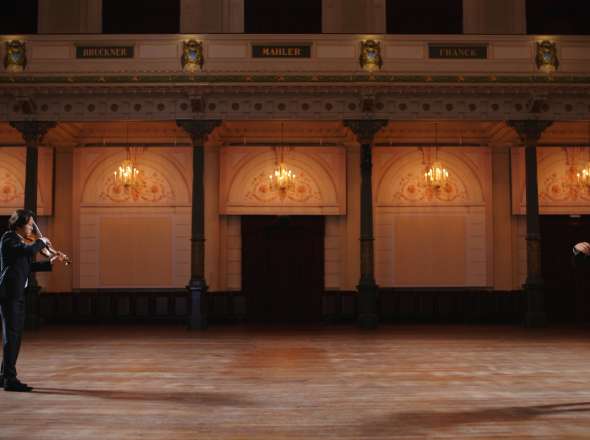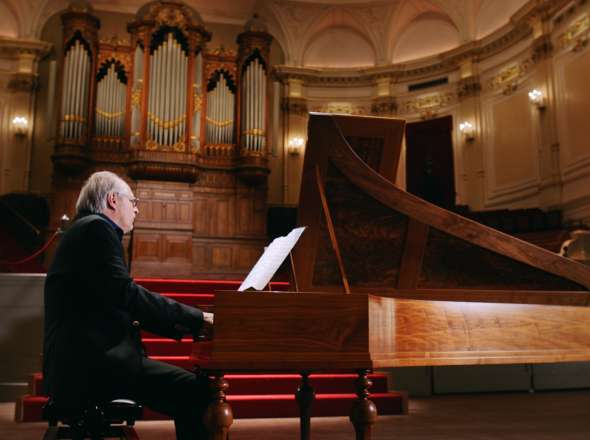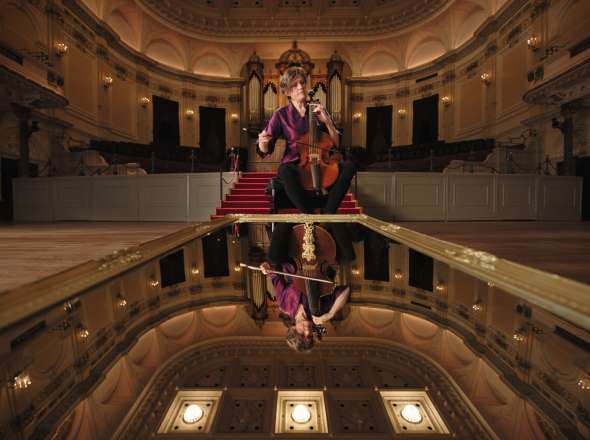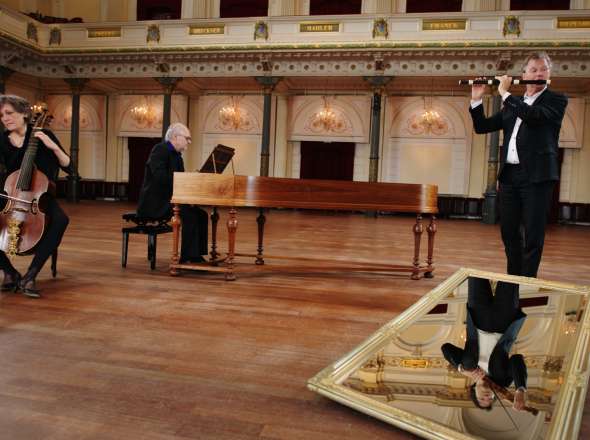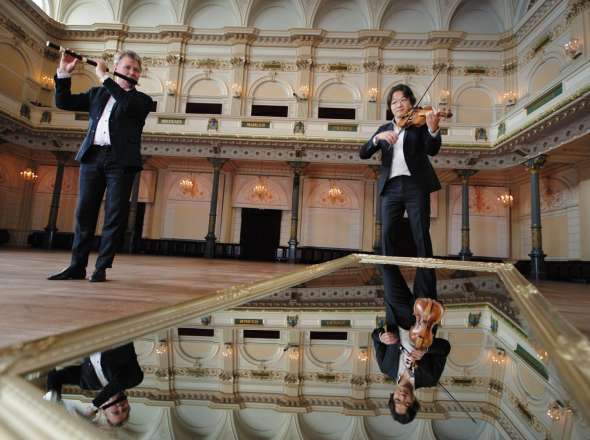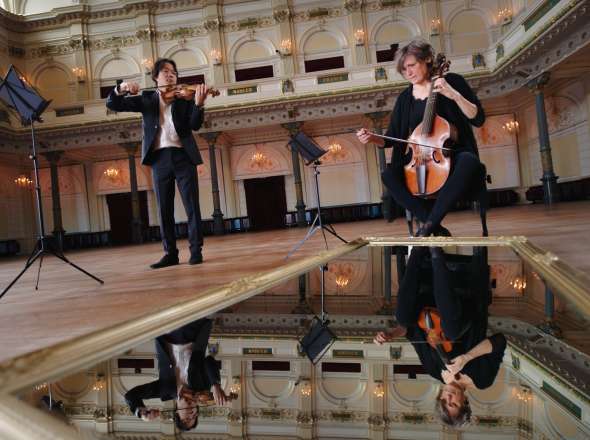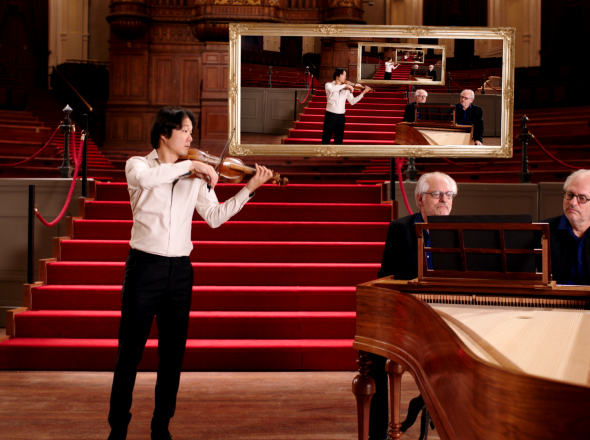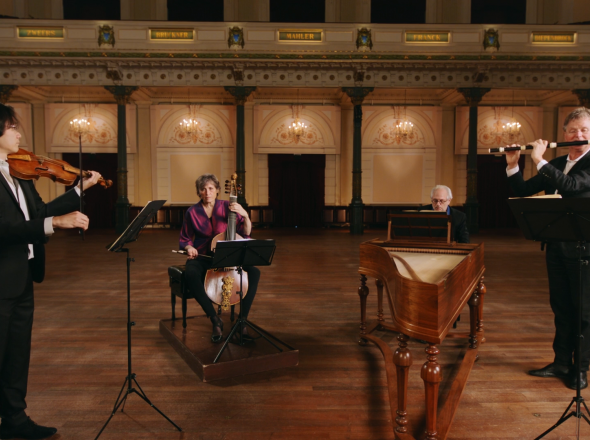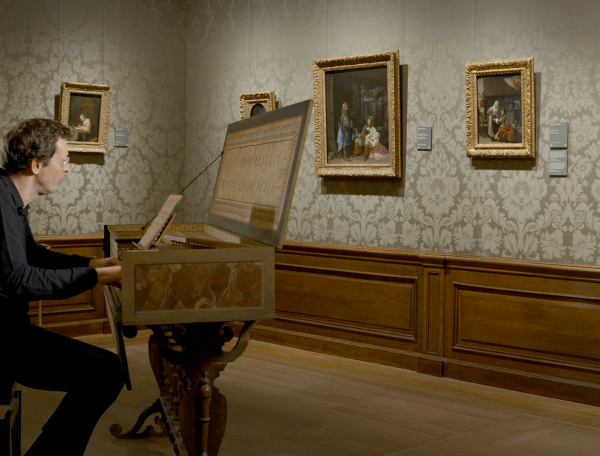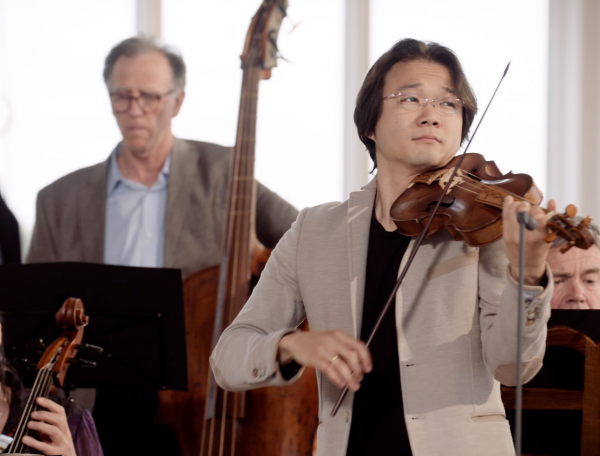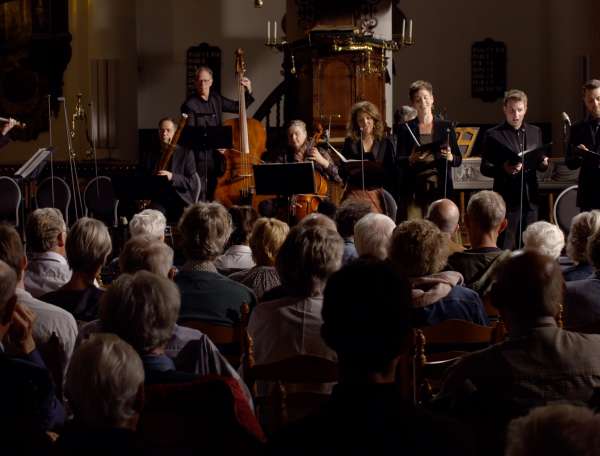
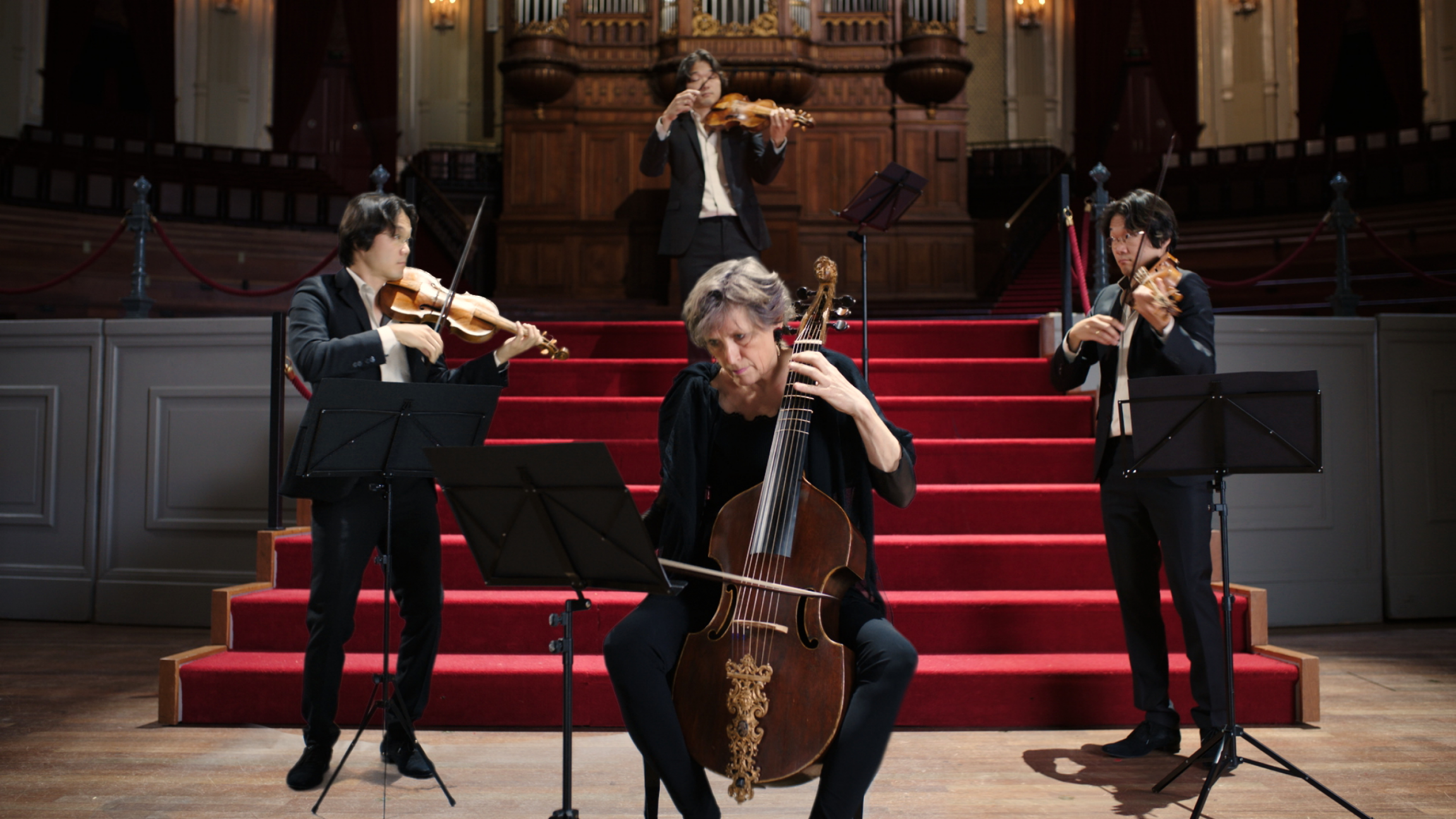
Canon a 4 Quaerendo invenietis from Musikalisches Opfer
BWV 1079/13 performed by Shunske Sato and Mieneke van der Velden
Het Concertgebouw, Amsterdam
Behind the music
One part; four voices
This canon is a real puzzle
Canons – pieces of music whereby one part is notated from which several voices can then be derived – come in all shapes and sizes. They may be very simple, like the song Frère Jacques, but also extremely complex. The ten canons in Bach’s Musikalisches Opfer range from those that are solved fairly simply to ingenious puzzles.
This Canon a 4 is a real puzzle. Bach notated just one part and gave only sparse instructions to the performers. The title indicates that it is a four-part canon (a 4). There is also the inscription ‘Quaerendo invenietis’: seek and ye shall find. At the beginning, there is both a treble clef and a bass clef. After a bit of puzzling, it appears that a new voice can enter in each eighth bar of the notated part. There is just one bass part, played here by Mieneke van der Velden on viola da gamba, and three parts in the same position. So for this performance, we opted for the same violinist – Shunske Sato – to play all three parts.

Musikalisches Opfer, BWV 1079
The Musikalisches Opfer is a special collection of chamber music within the work of Johann Sebastian Bach, written for Frederick the Great of Prussia. Musikalisches Opfer means ‘a musical offering’, and that is precisely how the collection originated.
It all started in May 1747, when Bach went to Potsdam to visit his son Carl Philipp Emanuel, who was working at the court of Frederick the Great. Bach was introduced to Frederick, who had heard that Bach was a great improviser and asked him on the spot to improvise a fugue on a given theme (undoubtedly a first shot at the Ricercar a 3). According to the sources, Bach made a brilliant job of it and showed such enthusiasm about the ‘royal theme’ that he promised to have the fugue engraved ‘on copper’ and printed.
No sooner said than done. Two months later, Bach published a series of compositions: a trio sonata, a three-part and a six-part ricercar and ten canons, all inspired by the king’s theme. Frederick was sent a splendid luxury print and Bach distributed his masterpiece among his friends, despite the high costs of printing. Incidentally, Bach himself did not call the collection Musikalisches Opfer, but rather Regis Iussu Cantio Et Reliqua Canonica Arte Resoluta (the theme given by the king, with additions, resolved in canonic style). The initials of this long title form the term ricercar, a name used at the time for an instrumental piece in which various themes are introduced and imitated.
The canons in the Musikalisches Opfer are a sort of visual music. Bach wrote them like puzzles, which the player must first solve in order to play them correctly. In these recordings, we wanted to give a literal picture of this ‘visual music’. So for example, wherever a part is doubled, the player will be in view twice. And where a part is mirrored, then the player appears in a mirror too.
- BWV
- 1079/13
- Title
- Canon a 4 Quaerendo invenietis
- Instrument
- viola da gamba, violin
- Genre
- chamber music
- Year
- 1747
- City
- Leipzig
- Occasion
- written for Frederick the Great
With support from
Extra videos
Vocal texts
Original
Translation
Credits
-
- Release date
- 8 June 2021
-
- Recording date
- 8 July 2020
-
- Location
- Het Concertgebouw, Amsterdam
-
- Violin
- Shunske Sato
-
- Instrument
- Cornelius Kleynman, ca. 1684
-
- Viola da gamba
- Mieneke van der Velden
-
- Instrument
- Antoine Despont, 1617
-
- Director and editor
- Onno van Ameijde
-
- Music recording
- Guido Tichelman, Bastiaan Kuijt, Pim van der Lee
-
- Music edit and mix
- Guido Tichelman
-
- Camera
- Onno van Ameijde, Jeroen Simons
-
- Lights
- Emile Groenewoud
-
- Lighting assistant
- Erwin Smit, Aden Zijp
-
- Data handling
- Stefan Ebels
-
- Assistant music recording
- Marloes Biermans
-
- Producer
- Jessie Verbrugh
-
- With support from
- MWH4impact
Musikalisches Opfer
The Musikalisches Opfer is a special collection of chamber music within the work of Johann Sebastian Bach, written for Frederick the Great of Prussia, and consists of a total of 13 movements.
Discover
Help us to complete All of Bach
There are still many recordings to be made before the whole of Bach’s oeuvre is online. And we can’t complete the task without the financial support of our patrons. Please help us to complete the musical heritage of Bach, by supporting us with a donation!
